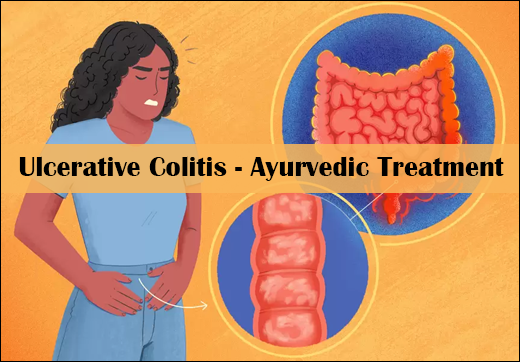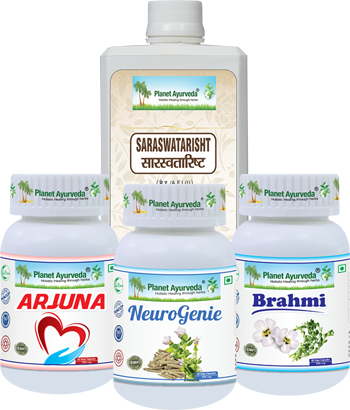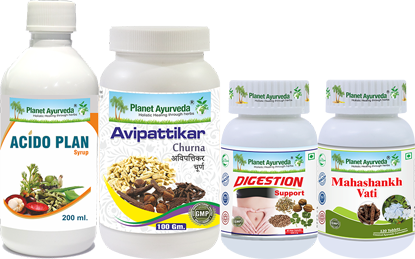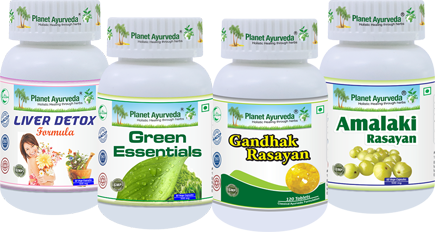ABSTRACT
Panchkarma is basically known as detoxification therapy. It holds a prime importance in ayurvedic medicine science as after panchakarma there is less or no risk of recurrence of disease. Panchakarma therapy includes poorvakrama (Pachana (digestion of food with herbs ), snehana (oleation therapy) and swedana (induced sweating)), Pradhan karma (Vaman (induced vomiting), virechan (induced purgation), basti (medicated enema), nasya (herbal nasal drops) and raktamokshan (Bloodletting)) and pashchatya karma i.e. samsarjana krama (ayurvedic dietary regimen). This article will put a limelight on one of panchakarma procedures i.e basti karma in managing ulcerative colitis.

INTRODUCTION
Before moving forwards to basti karma let's have a look at what is ulcerative colitis. Ulcerative colitis is an autoimmune disorder which is considered as IBD (Inflammatory bowel disease). In this, there is inflammation and production of ulcers in the large intestine, mainly colon and rectum. A patient with Uc may suffer from the following symptoms:-
- Diarrhea
- Blood in stool
- Mucus in stool
- Abdominal pain
- Weight loss
- Fever
- Urgency to defecate but unable to clear properly
- Cramping in abdomen
- Rectal pain
- Fatigue
- Failure to grow (In Children)
As we have mentioned earlier, it is an autoimmune disorder so the exact cause of this condition is not known. Some of the risk factors are listed below:-
- It may develop at any age but usually it begins at early 30’s.
- Negros have less chances to develop Ulcerative Colitis
- Having a Family history of Ulcerative colitis
- Weak immune response
- Drug intoxication
As per allopathy there is no exact treatment of Ulcerative colitis. They only give corticosteroids, anti-inflammatory drugs which you have to take for a lifetime. So why not to choose ayurveda? Ayurveda is a very vast science which has solutions for every problem. In ayurveda we can correlate this condition with Raktatisara. Have a look at the ayurvedic perspective of this disease.
NIDANA OF RAKTATISARA (CAUSES)
Raktatisara may be due to the below mentioned causes:-
- Pitta prakriti purusha (Patient’s having pitta prakriti )
- Adhyashan (Overeating)
- Excessive use of alkalis (kshara)
- Viruddha ahara sewana (Imbalanced diet consumption)
- Intake of katu, amala, lavana rasa in abundant quantity
- Excessive intake of Ushana(hot) and teekshna (penetrating) dravya (herbs)
- Krodha (Excess anger)
- Vegadhana (Controlling of natural urges)
- As a complication of panchakarma procedures.
- Arsha (Hemorrhoids)
- Grehani (malabsorption syndrome)
SAMPRAPTI OF RAKTATISARA (PATHOGENESIS OF ULCERATIVE COLITIS)
When a person takes a pitta vitiated diet and follows an unhealthy lifestyle then their pitta and rakta get elevated. Then pitta and rakta toxifies the large intestine and does bhedana of the mal (feces) due to its drava (liquid), sara (properties) and ushana (hot) guna (properties).
POORVAROOPA OF RAKTATISRA (PRODROMAL SYMPTOMS)
Poorvaroopa of rakta atisara includes the following:-
- Apana vayu avrodha (flatulence)
- Anga shithilta (fatigue)
- Avipaaka of food (Indigestion)
- Pricking or shooting pain in Hridya (heart), nabhi (mbilicus), guda (anal canal),udara (Stomach)
SAMANYA LAKSHAN OF RAKTATISRA (SYMPTOMS OF ULCERATIVE COLITIS)
The symptoms of raktatisra comprises of:-
- Rakatamishrit mala (Bloody diarrhea)
- Excessive Drav mal pravriti (diarrhea)
- Excessive thirst
- Burning sensation in Guda (rectum and colon)
- Shoola (Pain)
- Gudapaka (Suppurative ulceration of anal canal)
- Kapha mishrit mala (mucus)
After knowing both the aspects now we are moving ahead towards the management of Ulcerative colitis. As discussed earlier, allopathy has no treatment for this health condition but ayurveda has a very good solution for this. The management can be done very well with ayurvedic herbs and herbal formulations. From where to choose these Formulations? And the answer is Planet Ayurveda. It is a leading GMP certified herbal manufacturing unit offering numerous herbal products across the world for the management and prevention of diseases. The experts of Planet ayurveda provides some of the products for Ulcerative colitis and they are as follows:-
- Kutajghan Vati
- Pitta Balance
- Vatsakadi Churna
- Arjuna Capsules
- Coolstrin A
- Coolstrin B
- Motion Stop Tablets
- Belgiri Churna
Herbal Remedies For Ulcerative Colitis
These all formulations show wonders in alleviating symptoms of Ulcerative colitis. These herbal formulations possess anti-inflammatory, analgesic, antidiarrheal, mucolytic, digestive stimulant and cell detoxifying properties due to which it manages symptoms like blood in stool, diarrhea, mucus in stool. Pain in abdomen, bloating etc.
BASTI KARMA IN ULCERATIVE COLITIS
Basti is one of the panchakarma procedures. It is also known as ardha chikitsa (halfway to treatment) because Basti karma is useful in all types of diseases i.e. Sarvadehavyavaashrita roga. Basti mainly detoxifies the whole body by eradicating all the toxins due to its potency. The medication in Basti reaches all the sookshma srotas and Completely purifies the body, does radiance of toxins and is helpful in Speeding up the metabolism. It also assists in Reducing weight, Open up the block channels, Relaxing the mind and body, Rejuvenation of tissues, Boosts the Immunity and Relieves stress. Basti can be given with medicated oil, decoction, juice, meat soup, cow's urine, cow's ghee, madhu (Honey).

In Ulcerative colitis, the highly recommended basti is Bilwadi Oil and Irimedadi Oil. These medicated oils are very beneficial in ulcerative colitis as they contain properties which help in subsiding the associated symptoms.
1. Bilwadi Oil
Bilwadi oil is a classically indicated formulation used in the management of ulcerative colitis. It is very helpful in managing ear diseases. Bilwadi oil includes the following ingredient:-
- Bilwa (Aegle marmelos)
- Cow urine (Gomutra)
- Ajaksheera (Goat’s milk)
- Tila taila (Sesame oil)
Bilwa is the main constituent of bilwadi oil. It has katu, tikta, kashaya ras (Pungent, bitter, astringent) and tikshna (sharp), Snigdha (unctuous) and grahi guna (absorbent) with ho potency and katu vipaka (result after digestion). Bilwa possesses anti-inflammatory, laxative, analgesic, cardio protective and cell detoxifying properties.
Method Of Preparation Of Bilwadi Oil
- Mix the Bilva fruit in cow’s urine by grinding and preparing a paste-like consistency.
- Then add water if needed and put in on a low flame.
- When the paste changes the colour and starts turning red then add goat’s milk twice the quantity of oil.
- Cook it well under the low flames and do an examination when the water content has evaporated.
- Store it in an airtight container.
2. Irimedadi Oil
This is a polyherbal ayurvedic oil preparation which has irimeda as its primary constituent. Irimeda (Acacia farnesiana) has antibacterial, antiseptic, astringent, antidiarrheal, antimicrobial and ulcer healing properties. It also helps in boosting the immune system and aids in counteracting weakness. Irimeda is also known as babul. It has astringent, tikta (bitter), laghu (light), ruksha (Dry) properties that assists in pacifying kapha and pitta dosha. Below are the ingredients:-

- Irimeda (Acacia farnesiana)
- Manjishtha (Rubia cordifolia)
- Yashtimadhu (Glycyrrhiza glabra)
- Kapur (Cinnamomum camphora)
- Ela (Elettaria cardamomum)
- Khadir (Acacia catechu)
- Laung (Syzygium aromaticum)
- Agar (Aquilaria malaccensis)
- Lodhra (Symplocos racemosa)
- Jaiphal (Myristica fragrans)
- Dalchini (Cinnamomum verum)
- Katphal (Myrica nagi)
- Mustak (Cyperus rotundus)
- Shweta chandan (Santalum album)
- Raktachandan (Pterocarpus Santalinus)
- Takkola (Illicium verum)
- Jatamansi (Nardosatchys jatamansi)
- Dhatki (Woodfordia fruticosa)
- Gairika (Red ochre)
- Mrinala (Cymbopogon jwarancusa)
- Pippali (piper longum)
- Padma Kesar (Nelumbo nucifera)
- Kumkum (Crocus sativus)
- Laksha (Laccifer lacca)
- Brihati (Solanum indicum)
- Bilvapatra (Aegle marmelos)
- Devdaru (Cedrus deodara)
- Shilajit (Asphaltum)
- Saral (Pinus roxburghii)
- Sprikka (Delphinium zalil)
- Palash (Butea monosperma)
- Haridra (Curcuma longa)
- Daruharidra (Berberis aristata)
- Priyangu (Callicarpa macrophylla)
- Tejani (Clematis Triloba)
- Pradhakaleya (Coscinium fenestratum)
- Pushkara (Inula racemosa)
- Jaya (Abutilon theophrasti)
- Vyaghri (Solanum Xanthocarpum)
- Madana (Randia dumetorum)
- Tila taila (sesame oil)
- Nyagrodha (Ficus bengalensis)
- Udumbara (Ficus racemosa)
- Ashwattha (Ficus religiosa)
- Plaksha (Ficus lacor)
Method Of Preparation
- Take all the kwatha dravya and prepare decoction of it and then prepare kalka of kalka dravya.
- Now take sesame oil and prepare oil by adding both these paste and decoction.
- Cook it in a low flame and examine the oil when all the water content has evaporated.
- Store it in an airtight container.
ADMINISTRATION OF BILVADI AND IRIMEDADI OIL BASTI
Administration of basti can be done in three stages and they are as follows :-
1. Poorva Karma
- Poorva karma are the procedures which are done before giving basti to the patient. The initial step is to do snehana (oleation therapy) and swedana (Sudation therapy).
- In snehana, massages of the abdomen, back, thighs and legs are done.
- After that nadi sweda (a type of medication therapy) is done.
2. Pradhan Karma
- Now the patient is advised to position itself in the left lateral position and some amount of oil is applied in the anal region and also on the basti netra.
- Then gradually introduce the bastio netra in the anal canal and tell the patient to take a deep breath.
- Bilwadi oil or irimedadi oil is administered slowly through basti netra by pressing the basti putaka (enema syringe).
- Stop pressing the basti putaka (enema syringe) when a little amount of oil is left, just to prevent the entry of air in the large intestine.
- Then withdraw the basti netra slowly and the patient is advised to be in that position for 5 minutes for better absorption.
- A light massage is done in the feet and flank regions so that the oil gets absorbed easily.
3. Pashchat Karma
Then the patient is advised to follow the samsarjana karma for 7 days as mentioned in the classical texts.
WHY SHOULD ONE UNDERGO BASTI TREATMENT IN UC?
We know most of you are thinking why should I undergo this treatment if I am already taking herbal formulations? Aren't you? So don't stress your mind, we are here to help you. Along with the herbal formulations if you will take basti of these both oils then the recovery from UC will be faster. It will detoxify or eliminate the vitiated pitta dosha from the body and the recurrence rate of UC will be 0-2 %.
At last we can say the basti with these two oils shows wonders in managing ulcerative colitis. So along with the herbal formulations you can use basti treatment (medicated enema therapy) and keep yourself fit and healthy.
















